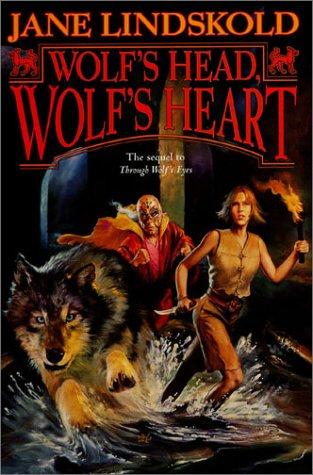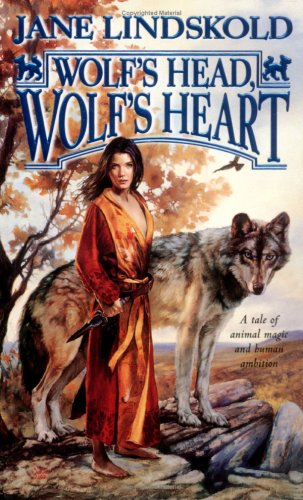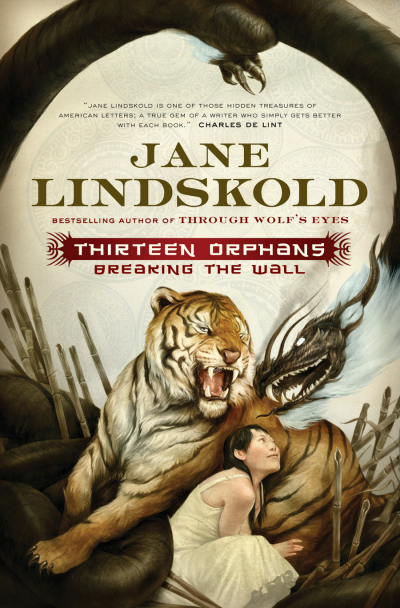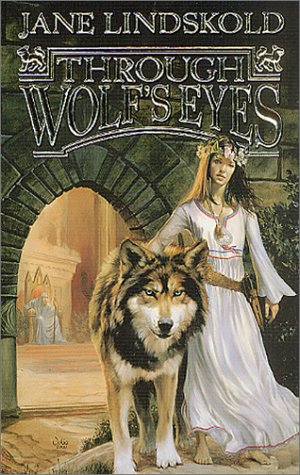This is the fourth (and I think final, unless someone comes up with something related they want me to discuss) piece in a short series where one author gives her reactions to some of the covers that have been put on her books.
In my last piece, “Series Doesn’t Equal Set,” I referred to an earlier comment by “Midwinter” in which was said: “the cover art to Changer was why I finally grabbed the book after passing it three or four times in the store.”
“Midwinter” clearly meant this as a compliment. However, I think this comment highlights a serious challenge book covers have always faced, and will face even more as book selling takes place more and more on-line. That is, how to make sure the book cover grabs the reader’s attention right away—even when it has been reduced to an icon the size of a postage stamp.
Throughout my career, I have had my share of what I have called “second look” covers. By this, I mean, covers that, while eye-catching in some fashion, demand that the reader pause long enough to take a second look or even to read the jacket copy for the true nature of the novel to emerge.
The cover to The Pipes of Orpheus, which I discussed in “When Right is Completely Wrong,” was one such cover. Another, oddly enough, graced the first of my books to become a bestseller: Through Wolf’s Eyes.
At first glance, this lovely painting by Julie Bell shows a pretty girl in a white gown standing next to a big dog or wolf. Her silky brown hair flows past her shoulders. She is crowned in flowers. Nice. Pretty. Girl and her animal book…
A second glance shows that something is wrong with that initial reaction. The girl is barefoot. The gown is belted with a battered leather knife-belt. Her only jewelry is a leather pouch hanging awkwardly around her neck. The expression on her face is twisted, even a bit demented. In the background, an old man leans forward from a throne, studying girl and wolf intently.
But you need that second look to see this. Otherwise, as “Eratosthenes” commented elsewhere on Tor.com, this book can be dismissed as girly. To quote in full: “There is no chance that I would have bought Through Wolf’s Eyes at the bookstore because it looks like a book written for young women and I am neither. I read the e-book and was hooked.”
Needless to say, haunted by the “fluffy bunny” covers of my early career—see “Look at What They’ve Wrapped Around My Baby” for more on this—I was deeply concerned.
Thank goodness, the strength of Julie Bell’s art seems to have meant that many readers did give the book that second look. Mileage on tone of later covers did vary widely, however, with scarred, battered  Firekeeper often depicted as a well-scrubbed girl-next-door.
Firekeeper often depicted as a well-scrubbed girl-next-door.
Perhaps the worst was the art on the hard cover of Wolf’s Head, Wolf’s Heart. A friend actually phoned me and said, “What’s Laura Mixon [mutual friend and N.M. author] and a Mexican wrestler doing on the cover of your new book?” I admit, seeing my dark, gritty sewer transformed into clean splashes was disheartening, and poor Grateful Peace!!
 I think it’s indicative that I wasn’t the only one to have a negative reaction to this cover. Tor commissioned an entirely different cover for the mass market paperback release. The scene is a bit tranquil, and I wonder where Firekeeper got that bathrobe, but I think it does more good than harm.
I think it’s indicative that I wasn’t the only one to have a negative reaction to this cover. Tor commissioned an entirely different cover for the mass market paperback release. The scene is a bit tranquil, and I wonder where Firekeeper got that bathrobe, but I think it does more good than harm.
As a side note, I was particularly delighted that, in later covers for the series, Ms. Bell’s wolves just got better and better. They lost the broad-chested “dog” look of that first cover, and became unmistakably wolves.
Another “second look” cover to grace one of my books was the beautiful, even elegant, painting by Eric Bowman for The Buried Pyramid. The colors are soft—pink sandstone and pale blue dominating.  The scene is of a small sailing craft gliding up a river that (from the misty pyramids glimpsed in the background) can only be the Nile.
The scene is of a small sailing craft gliding up a river that (from the misty pyramids glimpsed in the background) can only be the Nile.
A second look is needed to note the one incongruity in this calm scene. The young woman in the boat wears a gun belt around her neatly-skirted waist. That’s it. Otherwise, this book might be a dry, dull memoir, perhaps entitled, My Visit to the Monuments of Ancient Egypt.
I’ve got to admit, I would have put something completely different on the cover. My choice would have been Jenny Benet astride a camel, her rifle held with loose competence in one hand. Perhaps, if it could have been done without falling into “fluffy bunny” territory, I would have also included the kitten, Mozelle, who ends up playing such an interesting role in the novel.
This approach would have reached not only the fans of authors such as Elizabeth Peters, but also those who like novels with strong female characters. As matters stood, it took a second look, and maybe even a third or fourth, for readers to realize that this was a novel by the same person who wrote Through Wolf’s Eyes. (The information was on the cover, but in teeny-tiny type).
 The same lack of continuity in approach colored my reaction to the cover for Child of a Rainless Year. Although the art (by Gary Kelley) accurately evokes the opening scene of the novel, I don’t think the old-fashioned, cover-for-a-Raymond-Chandler-mystery approach best presented the novel. Moreover, the flat, even dull, hues that dominate the cover hardly reflect the content of a book for which “Color is the great magic” is the first line. Since this cover looks nothing like those for the Wolf Series or The Buried Pyramid, it’s also unlikely that readers who enjoyed those books would have picked up this one.
The same lack of continuity in approach colored my reaction to the cover for Child of a Rainless Year. Although the art (by Gary Kelley) accurately evokes the opening scene of the novel, I don’t think the old-fashioned, cover-for-a-Raymond-Chandler-mystery approach best presented the novel. Moreover, the flat, even dull, hues that dominate the cover hardly reflect the content of a book for which “Color is the great magic” is the first line. Since this cover looks nothing like those for the Wolf Series or The Buried Pyramid, it’s also unlikely that readers who enjoyed those books would have picked up this one.
 I’m not saying all books by the same author need to have the same cover artist, but there should be some continuity in theme. I dearly hope that Tor has reached this balance with the amazing cover, by Sam Weber, for my newest novel, Thirteen Orphans. The lifelike depiction of the tiger will hopefully reach those who think of me as the “animal” writer, while the gorgeous Chinese dragon may speak to those who have enjoyed my ventures into myth and legend.
I’m not saying all books by the same author need to have the same cover artist, but there should be some continuity in theme. I dearly hope that Tor has reached this balance with the amazing cover, by Sam Weber, for my newest novel, Thirteen Orphans. The lifelike depiction of the tiger will hopefully reach those who think of me as the “animal” writer, while the gorgeous Chinese dragon may speak to those who have enjoyed my ventures into myth and legend.
In sum, I have no illusions that people will remember my name. Readers rely on book covers to hint that this is a book they will like. That’s why I have such strong opinions on the subject, and why I’ve taken the time to share them with you.











i find your notes very interesting. i wish more authors did this. truth be told, perhaps the authors could supply the publisher, in this case Tor, with some notes on exactly what you’re thinking for the image on the front? either way, you know you hit the big time when your name is more predominately displayed on the jacket art than the title of the book!
do you have any thoughts on the interior text designs of your books? no matter how awesome a cover is, if the interior is awfully hard to read, the book won’t sell that well.
thanks for your posts!
I have read all four of your installments on this cover ‘issue’ and I have to agree with everything. I picked up Buried Pyramid several times and put it back down unread until Tor offered it online and then I loved the story. I am also an Elizabeth Peters fan and was still not pulled in.
I also agree that Julie Bell’s Firekeeper covers keep improving. I think Wolf Hunting is the best. The wolves look like real wolves with an intent intelligence in their eyes (and Blind Seer’s blue ones stick out), Firekeeper is barefoot, minimally dressed and has a mop of messy hair. The only issues are the braided anklet which seems too artsy and human for Firekeeper; and the ragged and torn black cloth being used as a belt just seems odd and is missing Fang.
Though I buy online and research mostly by title and author, I still enjoy looking at and deciphering covers and they continue to be important to me (and I still pick up new authors by finding a fascinating covers – discovered Ariana Franklin just recently by seeing her cover for The Mistress of the Art of Death). Beautiful covers (like the Thirteen Orphans one) can only enhance the story and draw more potential readers. Ugly, ill-concieved or poorly researched covers will not only keep away new readers and potentially alienate current readers.
Now I’m wondering if the covers are why I’ve never gotten around to reading any of your books other than the Zelanzy collaborations and the Changer novels, all of which I quite enjoyed. On some level, most of the others look like books I wouldn’t read. Sigh.
In sum, I have no illusions that people will remember my name. Readers rely on book covers to hint that this is a book they will like.
Well, I was going to question the truth of this statement, but comment #3 seems to prove your point.
I, at least, have long had the opinion that the most important part of the cover is the author’s name, and quickly categorize the author as (1) an author I know I like, (2) an author I know I dislike, (3) an author I have heard about but not read, or (4) a complete unknown. I think the cover picture would probably only influence my decision on whether or not to take a closer look at the book for category 4. But apparently that habit isn’t typical among readers, so it doesn’t help much. (And all authors start in category 4 for most readers, anyway.)
So, while I do like the cover for Thirteen Orphans, I was going to buy it anyway; but that result isn’t generally applicable, especially for less-established authors.
I don’t know, I’ve found Lindskold to be a memorable name since Brother to Dragons came out.
To answer “ishka” on interior design…
Yes. I do react to how the interior is set up.
In most cases, I’ve been more or less happy. I loved the fancy little dingbats someone designed for the interior section breaks for the Wolf Series.
The title page for THE BURIED PYRAMID was a pure joy.
I also enjoyed the zodiac wheel at the opening of the chapters for THIRTEEN ORPHANS.
A few times, the book was “shrunk down” so much that the text was almost unreadable. I remember my shock when WOLF’S HEAD, WOLF’S HEART arrived and it was thinner than THROUGH WOLF’S EYES — but I knew the manuscript for WH,WH had been longer.
THE BURIED PYRAMID also suffered from the “too small type” problem.
But mostly I’ve been content.
Thanks for all the comments, both on this final post in the series, and the earlier ones.
I’ll come up with something new when I get settled from my holiday travels. Suggestions are welcome!
(That way I know at least one person is interested).
That too-small type thing is a pet peeve of mine. Now that I’m in my forties, it’s not as easy to read small print. I need excellent light to do it. That reduces the number of places I can read such books and it make it harder to stay mentally focused on them. I wonder if that’s why so many books are being released in trade paperback format instead of mass market.
“I’m not saying all books by the same author need to have the same cover artist, but there should be some continuity in theme.”
Actually, that is sometimes how I find authors on the bookshelves if the store doesn’t carry a lot of copies and I’ve halfway forgotten the author’s name. When I’m just starting to get to know an author, similar covers help me find them again. I don’t think all authors have to have the same artist, but one of the reasons I discovered Julie E. Czerneda’s books was because of the beautiful cover art by Luis Royo. Concurrently, I liked his cover art so much that I looked for his art by itself and have bought several books of his collected work.
Cover art is very important for eyecatching in the store – but I disagree that it has to be catchy when buying online. Because it is the size of a postage stamp I ignore the cover art when buying online and stick strickly with the story. Sometimes I’m completely surprised by the cover art when I finally see it and find out that the woman I thought was on the cover is actually an exotic alien feline or something. ;)
I usually buy books by authors I know or who were recommended to me, so in my case it’s the name that matters… but I do love a good cover.
I wondered about Firekeeper’s bathrobe, too, but it’s a pretty bathrobe, my favourite colours, so I thought at least she had a good taste. And now that I’ve seen the original cover for Wolf’s Head, Wolf’s Heart, I find it even prettier!
I also found this series of posts interesting because I work as a translator and and most of the time I’ve no idea what the book I’m working on will look like. But there was one publishing house I worked for that always made us, translators, come up with possible cover themes, because we were the only people sure to read the whole thing. It actually worked, though most translators don’t know much about pictures and sometimes it took ages to agree on a scene that was possible to paint, and oh, how the graphic artists hated us.